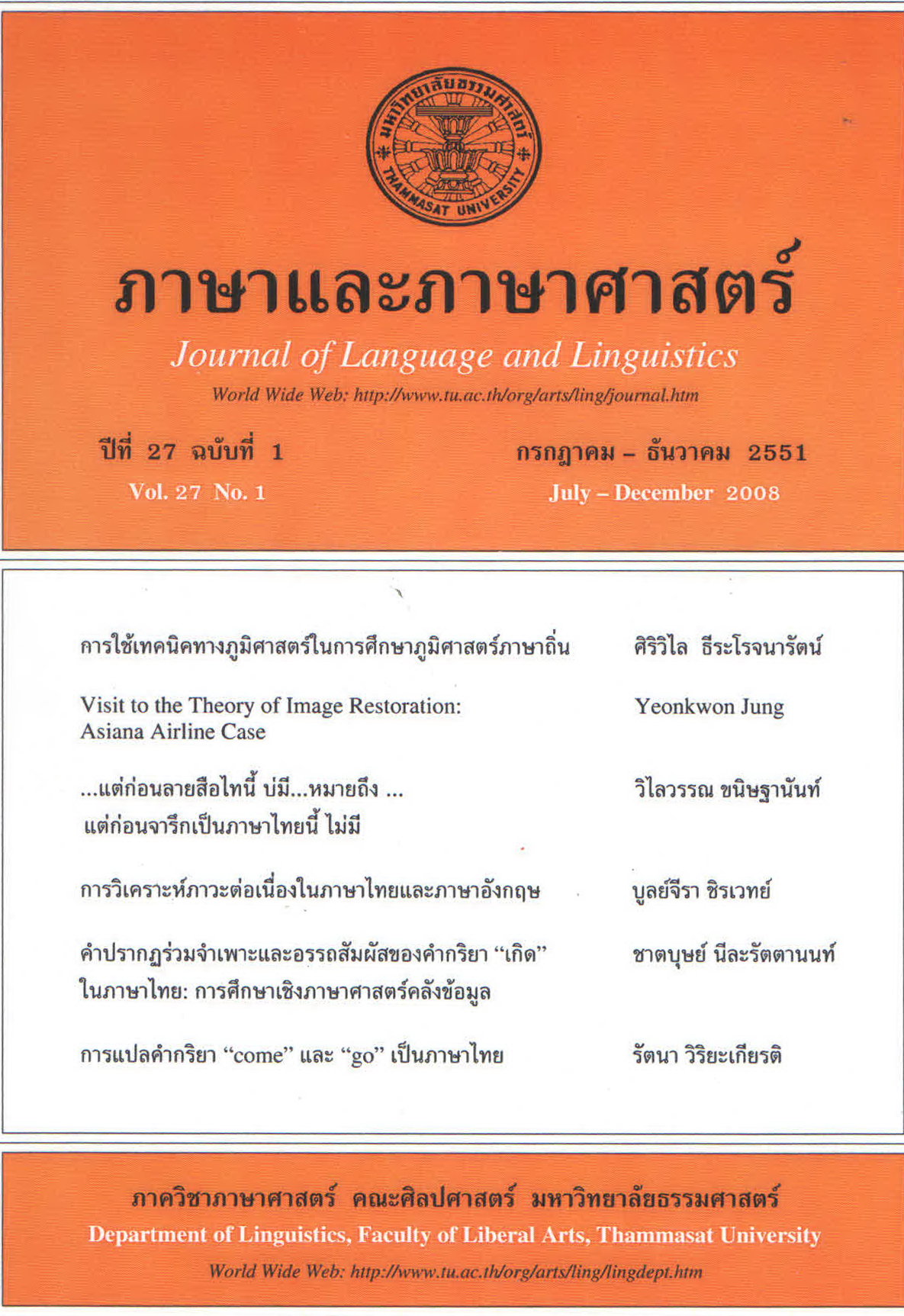การแปลคำกริยา “come” และ “go” เป็นภาษาไทย
Main Article Content
Abstract
This article is a study of place deixis in the Thai translation of in The Joy Luck Club, The Kitchen God’s Wife and The Bonesetter’s Daughter: a case study of the verbs ‘come’ and ‘go’. The data found are categorized and studied to identify the meanings and types of ‘come’ and ‘go’ and their translation techniques.
In the English version, the findings show that there are two types of ‘come’ and ‘go’: 1) ‘Come’ and ‘Go’ indicate motion. ‘Come’ implies a motion to word the location of the speaker, the location of the address, the location of an important character and the place. ‘Go’ implies a motion away from the speaker and 2) ‘Come’ and ‘Go’ indicates motion away from the normal state.
There were 5 techniques found in the translations: 1) translation with referential meaning 2) translation with other motion verbs 3) translation with the opposite meaning of referential meaning 4) replacing with related words or expression and 5) deletion.
Article Details
บทความทุกบทความเป็นลิขสิทธิ์ของภาษาและภาษาศาสตร์


